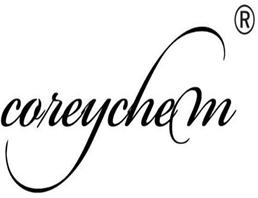| Chemical properties |
It appears as white to yellowish white solid, sometimes appearing as shiny crystalline solid, or white to yellowish white powder. It has a relative density of 0.8739 (80 ℃), melting point of 54.5 ℃ and the boiling point of 326.2 ℃. Its refractive index (nD60) is 1.4310. It is not soluble in water but soluble in ethanol, ether and chloroform.
Myristin contains about 70% to 80% while other kinds of coconut oil, palm kernel oil also contain it. |
| Application |
- It can be used as a chemical agent, also for the synthesis of spices and organic matter
- It can be used in the manufacture of emulsifiers, waterproofing agents, curing agents, PVC heat stabilizers and plasticizers, and also used as the raw materials of spices and pharmaceutical.
- It is mainly used as raw materials for the production of surfactants for the production of sorbitan fatty acid esters, glycerol fatty acid esters, ethylene glycol or propylene glycol fatty acid esters. It can also be used for the production of isopropyl myristate and so on. It can also be used for defoamers and flavoring agent. According to the provision of China GB2760-89, it can be used to prepare a variety of food spices.
|
| Preparation |
To prepare the myristic acid, the methyl ester of the mixed fatty acids or mixed fatty acid methyl ester obtained from the coconut oil or palm kernel oil is subject to vacuum fractionation, obtaining myristic acid. For laboratory preparation, glycerol tris (tetradecanoate) is subject to saponification with 10% sodium hydroxide solution, further being acidified with hydrochloric acid to obtain the free myristic acid. It can also be made from tetradecanol. |
| Toxicity |
Natural fatty acids, non-toxic
Can be safely used for food (FDA, § 172.860; 2000).
LD50:43 mg/kg (mouse, transdermal). |
| Use limit |
FEMA (mg/kg): soft drinks 5.3, cold drinks 2.6~10, candy 4.1, baked goods 5.3, pudding class 0.10. |
| Chemical Properties |
white solid |
| Uses |
Myristic Acid is a common saturated fatty acid found in nutmeg, palm kernel oil, coconut oil and butter fat. |
| Uses |
myristic acid is a surfactant and cleansing agent. When combined with potassium, myristic acid soap provides very good, abundant lather. This is a solid organic acid naturally occurring in butter acids such as nutmeg, oil of lovage, coconut oil, mace oil, and most animal and vegetable fats. Although some sources cite it as having no irritation potential, they do indicate comedogenicity potential. |
| Definition |
ChEBI: A straight-chain, fourteen-carbon, long-chain saturated fatty acid mostly found in milk fat. |
| Uses |
Myristic acid is a 14-carbon saturated (14:0) fatty acid. In vivo, it is commonly added covalently to the N-terminus of proteins in a co-translational process termed N-myristoylation. In addition, there are examples where N-myristoylation occurs post-translationally, when a hidden myristoylation pattern is exposed. |
| General Description |
Oily white crystalline solid. |
| Air & Water Reactions |
Insoluble in water. |
| Reactivity Profile |
Myristic acid is a carboxylic acid. Carboxylic acids donate hydrogen ions if a base is present to accept them. They react in this way with all bases, both organic (for example, the amines) and inorganic. Their reactions with bases, called "neutralizations", are accompanied by the evolution of substantial amounts of heat. Neutralization between an acid and a base produces water plus a salt. Carboxylic acids with six or fewer carbon atoms are freely or moderately soluble in water; those with more than six carbons are slightly soluble in water. Soluble carboxylic acid dissociate to an extent in water to yield hydrogen ions. The pH of solutions of carboxylic acids is therefore less than 7.0. Many insoluble carboxylic acids react rapidly with aqueous solutions containing a chemical base and dissolve as the neutralization generates a soluble salt. Carboxylic acids in aqueous solution and liquid or molten carboxylic acids can react with active metals to form gaseous hydrogen and a metal salt. Such reactions occur in principle for solid carboxylic acids as well, but are slow if the solid acid remains dry. Even "insoluble" carboxylic acids may absorb enough water from the air and dissolve sufficiently in Myristic acid to corrode or dissolve iron, steel, and aluminum parts and containers. Carboxylic acids, like other acids, react with cyanide salts to generate gaseous hydrogen cyanide. The reaction is slower for dry, solid carboxylic acids. Insoluble carboxylic acids react with solutions of cyanides to cause the release of gaseous hydrogen cyanide. Flammable and/or toxic gases and heat are generated by the reaction of carboxylic acids with diazo compounds, dithiocarbamates, isocyanates, mercaptans, nitrides, and sulfides. Carboxylic acids, especially in aqueous solution, also react with sulfites, nitrites, thiosulfates (to give H2S and SO3), dithionites (SO2), to generate flammable and/or toxic gases and heat. Their reaction with carbonates and bicarbonates generates a harmless gas (carbon dioxide) but still heat. Like other organic compounds, carboxylic acids can be oxidized by strong oxidizing agents and reduced by strong reducing agents. These reactions generate heat. A wide variety of products is possible. Like other acids, carboxylic acids may initiate polymerization reactions; like other acids, they often catalyze (increase the rate of) chemical reactions. |
| Fire Hazard |
Myristic acid is probably combustible. |
| Safety Profile |
Poison by intravenous route. Mutation data reported. An eye and human skin irritant. When heated to decomposition it emits acrid smoke and irritating fumes. |
| Purification Methods |
Purify the acid via the methyl ester (b 153-154o/10mm, n25 1.4350), as for capric acid. [Trachtman & Miller J Am Chem Soc 84 4828 1962.] Also purify it by zone melting. It crystallises from pet ether, and is dried in a vacuum desiccator containing shredded wax. [Beilstein 2 IV 1126.] |

 China
China






